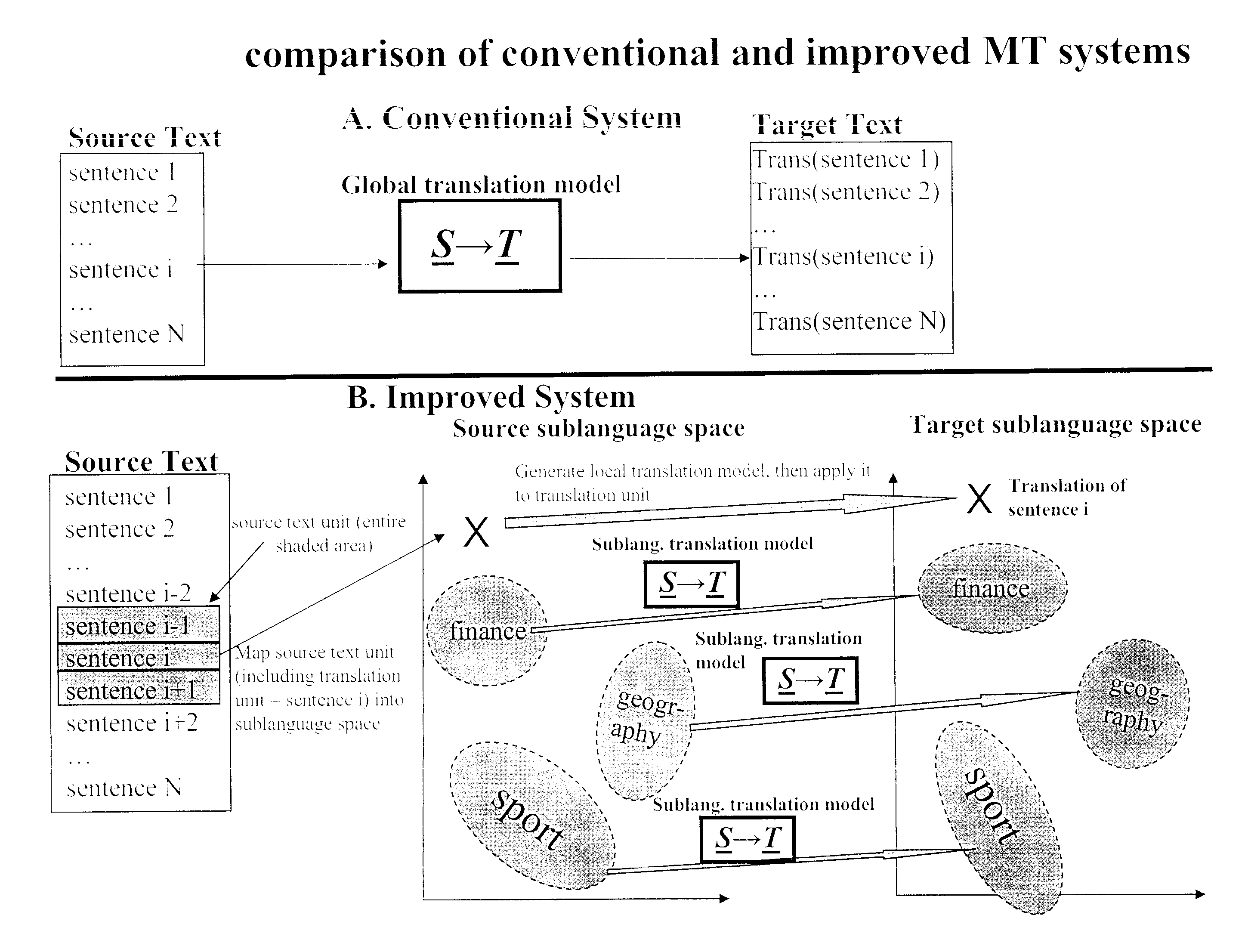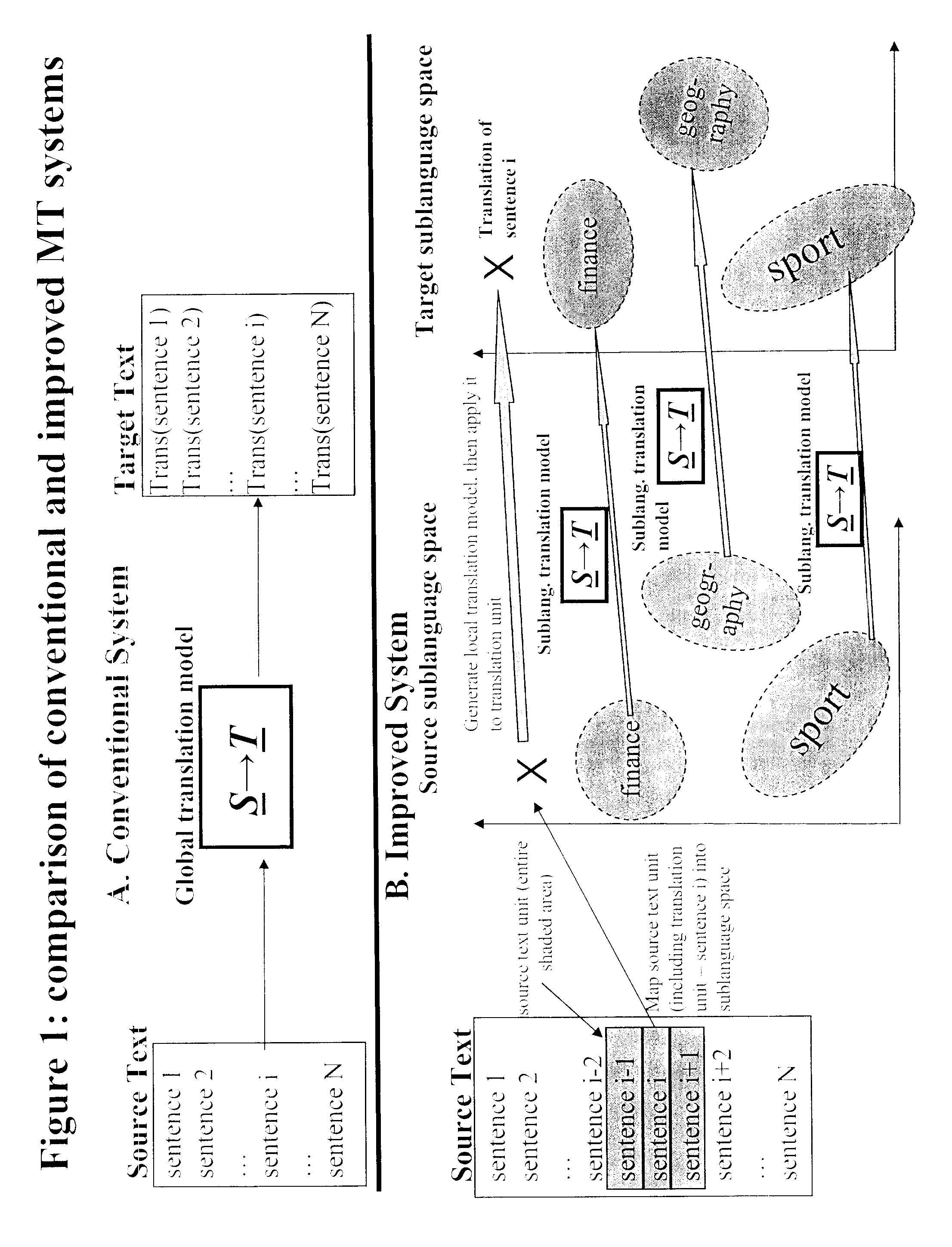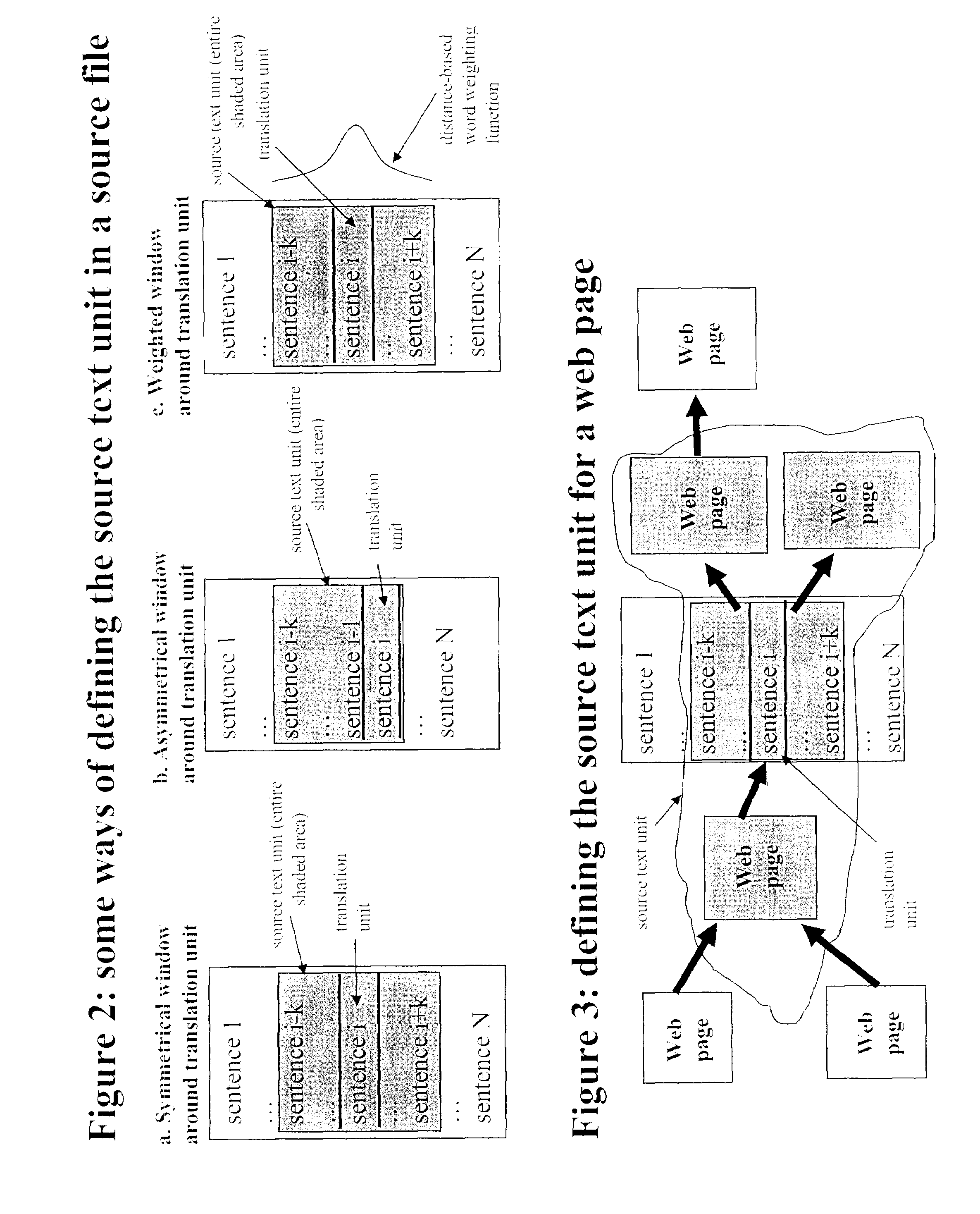Means and Method for Adapted Language Translation
a translation system and language technology, applied in the field of means and methods for adapted language translation, can solve the problems of requiring hundreds or thousands of computations, slow off-line process training a current statistical machine translation system, and inability to create such a system
- Summary
- Abstract
- Description
- Claims
- Application Information
AI Technical Summary
Benefits of technology
Problems solved by technology
Method used
Image
Examples
Embodiment Construction
[0028]In this document, the source word sequence S being translated (which is typically a sentence or line of text) will be referred to as the “translation unit”. The invention can use information from a chunk of source text that includes translation unit S to produce a better translation of S into the target language. This chunk of text that includes S will be referred to as the “source text unit”. Thus, the translation produced when translation unit S is put into the improved MT system by itself may differ from the translation produced for S when it is put into the improved system along with the rest of the source text unit containing S.
[0029]An embodiment of the machine translation (MT) system described here resembles a good human translator in that it can carry out context-dependent translation—that is, translation adapted to the text environment in which the translation unit finds itself. The lower part of FIG. 1 shows how the invention achieves this.
[0030]One aspect of the inv...
PUM
 Login to View More
Login to View More Abstract
Description
Claims
Application Information
 Login to View More
Login to View More - R&D
- Intellectual Property
- Life Sciences
- Materials
- Tech Scout
- Unparalleled Data Quality
- Higher Quality Content
- 60% Fewer Hallucinations
Browse by: Latest US Patents, China's latest patents, Technical Efficacy Thesaurus, Application Domain, Technology Topic, Popular Technical Reports.
© 2025 PatSnap. All rights reserved.Legal|Privacy policy|Modern Slavery Act Transparency Statement|Sitemap|About US| Contact US: help@patsnap.com



